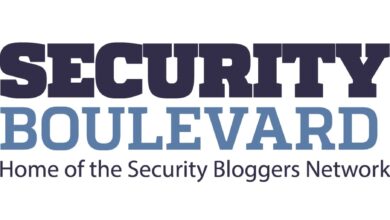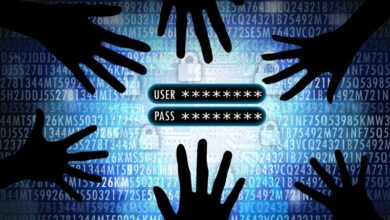Cybersecurity Hygiene: Key Challenges and Solutions

Just as we maintain physical health through daily routines like brushing our teeth and washing our hands, the digital world demands tailored ‘sanitization’ tactics to combat ever-evolving cyber threats.
Your Organization Must Scrub Up
An organization in India is being attacked on average 2628 times per week in the last 6 months, compared to 1236 attacks per organization globally.Cyber security hygiene refers to the essential practices and routines organizations adopt to protect their digital environments from such cyber threats. Like personal hygiene preventing illness, cyber security hygiene involves regular actions to safeguard against data breaches and cyber attacks
Sanitize for Squeaky-clean Security
Some of the most significant cyber security challenges that businesses face are:
- Remote work vulnerabilities: With the increase in remote work, attackers exploit security gaps in home networks and unsecured remote access tools. As of 2023, almost 13% of full-time employees work from home, with over 28% working a hybrid model. At the same time, an organization in India is being attacked on average 2807 times per week in Q1 2024, demonstrating a +33% YoY change.
- IoT device attacks: The proliferation of Internet of Things (IoT) devices has opened new avenues for cyber attacks, as many such devices lack robust security features. In the first six months of 2023, the number of IoT malware attacks globally increased by 37%, resulting in a total of 77.9 million attacks, compared to 57 million attacks in the first half of 2022.
- AI-powered attacks: The use of artificial intelligence by cybercriminals has led to more complex and adaptive cyber threats, including AI-driven phishing and automated hacking tools.
- State-sponsored cyber warfare: There is a growing concern about cyber attacks sponsored by nation-states, targeting critical infrastructure, government agencies, and key industries for espionage or disruption.
The Essential 12-step Cyber security Regime
- Embrace the Shared Responsibility Model
The Shared Responsibility Model emphasizes that safeguarding digital assets is a collective effort, not just the duty of IT teams. All employees (yes, all) must be educated about cyber risks to foster a collaborative culture of cyber security awareness and create a continuous communication loop to delegate accountability and responsibility.
2. Regular Security Audits and Simulations
Audits are a proactive strategy to reveal gaps and potential weaknesses in your technology infrastructure to optimize security controls. Simulations, like breach-and-attack scenarios, test your defenses in a controlled environment, providing insights into how well your organization can detect and respond to real threats.
3. Early Detection and Incident Response
Catching an incident early is the best chance to avoid financial and reputational repercussions. Implement security monitoring tools that identify potential breaches, enabling swift response to mitigate the impact and minimize the time attackers spend in your system. Additionally, you should develop a well-defined incident response plan that outlines specific steps for containment, eradication, and recovery, as well as post-incident analysis to improve future security measures.
4. Employee Education and Awareness
Remember when we said that all employees are responsible for cyber security? The problem with this adage is that only some employees have an advanced degree of knowledge. Security awareness modules, regular training, and social engineering tests help your workforce make the right decisions on issues like password security and phishing attempts, significantly reducing the risk of breaches caused by human error.
5. Implement Strong Password Policies
Thought simple and silly passwords were a thing of the past? Wrong – hackers brought down SolarWinds thanks to a weak password (‘solarwinds123’). Fundamental best practices include:
- Enforce complex, hard-to-guess passwords that combine letters, numbers, and special characters.
- Change passwords regularly.
- Incorporate multi-factor authentication (MFA).
- Educate employees on the importance of strong passwords.
- Facilitate the use of password managers and IAM tools.
6. Regular Data Backups and Software Updates
Regular backups ensure that critical data is preserved and can be restored in case of a cyber attack or data loss, with backups ideally stored in multiple locations, including off-site or cloud-based storage. Keeping software up-to-date is equally important, as updates often include patches for security vulnerabilities.
7. Network Security and Firewalls
Deploy network firewalls to protect your online resources, segment internal networks to isolate malware infections, and control incoming and outgoing network traffic based on predetermined security rules. Network security also involves implementing additional measures like intrusion detection systems and secure Wi-Fi protocols to ensure that only legitimate traffic is allowed. At the same time, malicious or unauthorized access is blocked.
8. Exercise Online Discretion
Cyber security is everyone’s priority. Advise employees to exercise discretion about email communications, avoid clicking on suspicious links, and not reveal password hints or personal data that could be used in social engineering attacks. You can promote a vigilant approach to the risks of suspicious emails or links and the importance of protecting personal and corporate data.
9. Ongoing Monitoring and Network Management
Continuously monitor network access permissions and ensure they align with current roles and responsibilities. Regularly review and update these permissions to prevent unauthorized access to sensitive information and respond to unusual behavior. Effective network management also includes updating security protocols and hardware to respond to new threats.
10. Mobile Device Security
Protection extends beyond corporate laptops. It’s essential to update software for all devices, including mobile phones and tablets that access company networks. Other strategies include using strong encryption for data, implementing secure access controls, and installing reputable security applications.
11. Utilize VPN for Secure Connections
Encourage the use of Virtual Private Networks (VPNs) for secure connections, especially when employees work remotely. VPNs encrypt data, making it more challenging for hackers to access sensitive information. Remember to remind employees regularly about safe usage practices, such as avoiding unsecured Wi-Fi networks and being cautious with app downloads.
No matter how basic or complex, these fundamentals of cyber security hygiene equip you with the knowledge to maintain a healthy and secure digital space.



